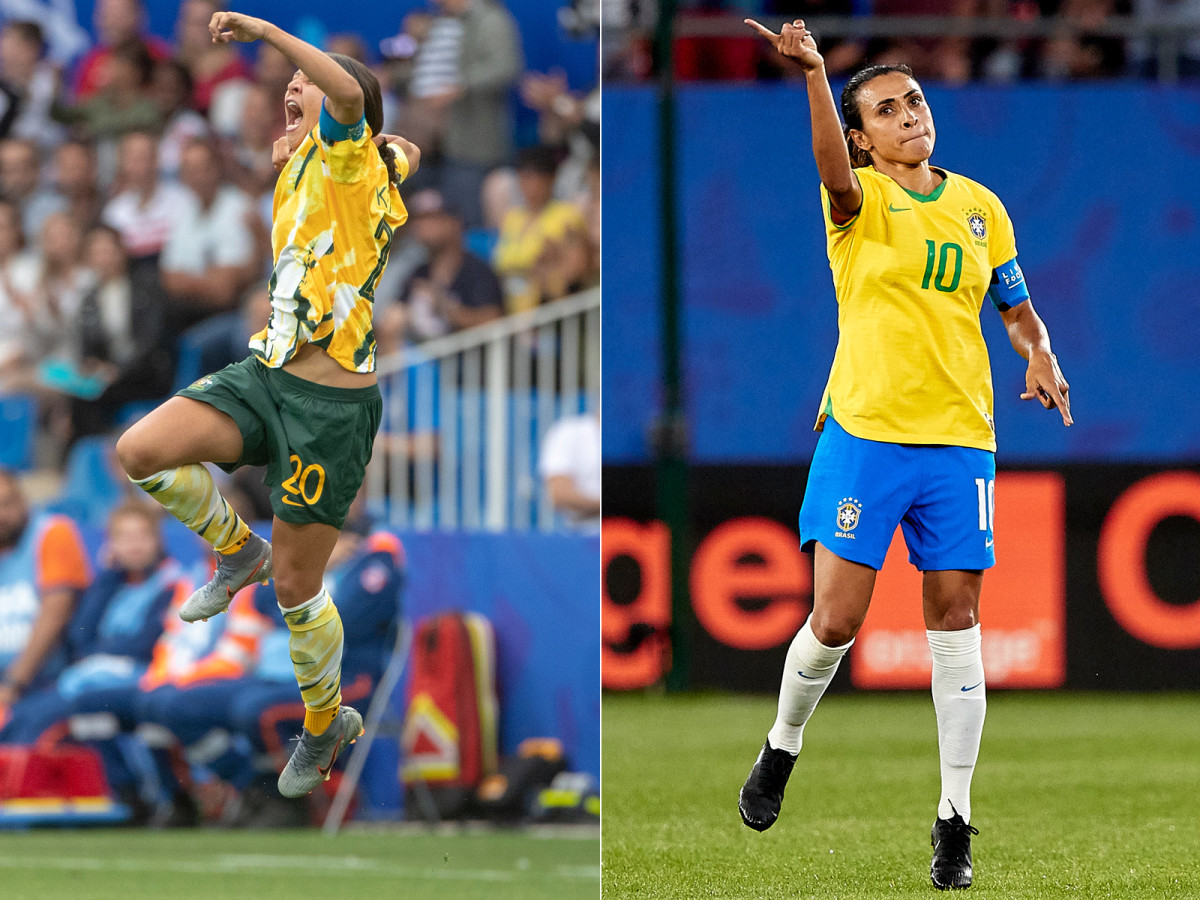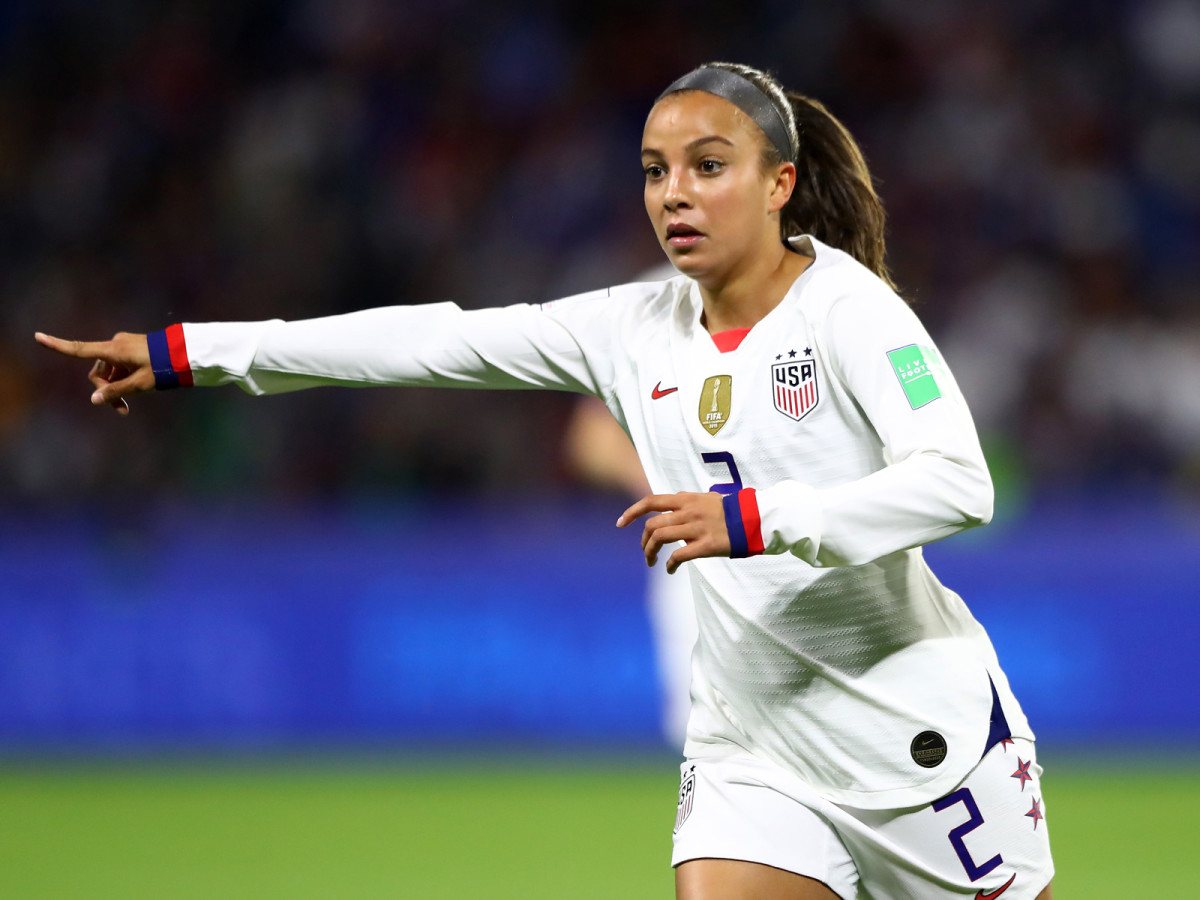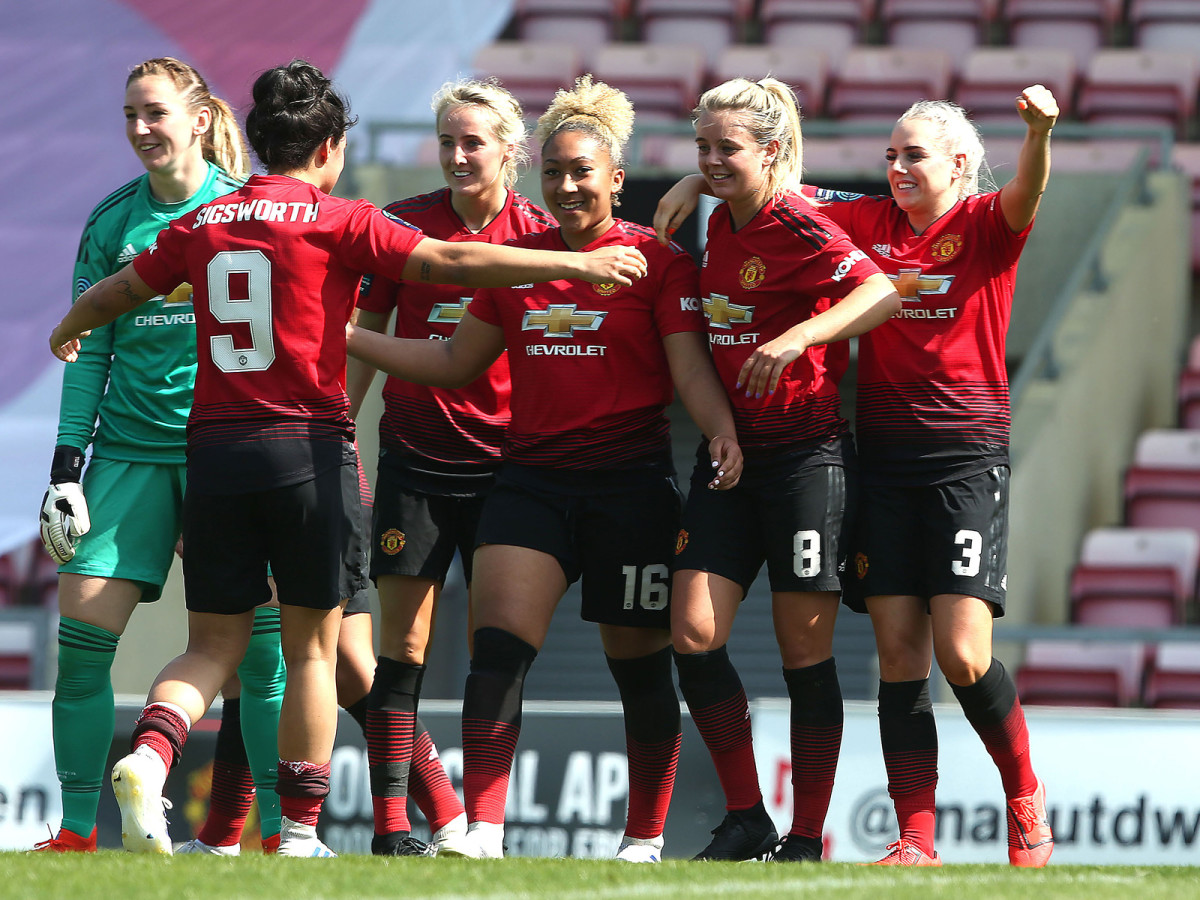The Intricacies and Ever-Changing Landscape of the Global Market for Women's Players

LYON, France — What’s the top end of the global market for women’s soccer players—and how might it change in the wake of the 2019 Women's World Cup?
Those were the questions asked of a few agents who work in the women’s game during the latter stages of the Women's World Cup. In exchange for anonymity, they were willing to provide information and honest commentary.
Let’s start with the U.S. team. All 23 U.S. players in France ply their trade in the NWSL. Their playing salaries are essentially the same. U.S. Soccer subsidizes the NWSL by paying the national team players’ NWSL salaries, in addition to providing payments for their USWNT accomplishments per the collective bargaining agreement.
The base salary for USWNT players is $173,000 per year. According to the most recent records that U.S. Soccer has filed with the IRS, in fiscal year 2018 (from October 1, 2017 to Sept. 30, 2018) these were the amounts the federation paid to a few key U.S. players:
Christen Press - $257,920
Becky Sauerbrunn - $256,720
Kelley O’Hara - $256,695
Sam Mewis - $247,497
But where income can really spike is in the area of endorsements. Sources say Alex Morgan makes an annual income in the low seven figures thanks largely to endorsements with Nike, Coca-Cola and Secret. Megan Rapinoe, Tobin Heath, Julie Ertz, Carli Lloyd, Press and Mallory Pugh also have significant endorsement incomes.
“I’d say the top stars have the potential to make seven figures if you really grind it out,” one agent said. “You can’t discount that it’s supertaxing, traveling everywhere, trying to get production days, trying to do all this stuff. And on top of that, you have to do U.S. Soccer stuff and all these editorial things that aren’t paid. It takes a toll.”
How do incomes for players at the top European clubs compare? Let’s take Lyon, which has won the last four UEFA Women's Champions League titles. French stars Amandine Henry and Wendie Renard have base salaries of €348,000 ($391,000) a year and also earn bonuses. I’m also told that Ballon d’Or winner Ada Hegerberg earned around €500,000 ($562,000) from Lyon in the past year, including bonuses.
But endorsement deals in Europe aren’t nearly as lucrative as they are in the U.S., so while Hegerberg has the highest playing income in the world, her overall income including endorsements (currently around $700,000 a year) isn’t as high as Morgan’s.
Elsewhere in Europe, I’m told the highest annual salary in England is currently around £125,000 ($157,000), with some of the highest earners including Chelsea’s Fran Kirby and Arsenal’s Jordan Nobbs (English teams have a salary cap). Arsenal is viewed these days as the team with the biggest spending budget for its women’s team.
“In Sweden they pay next to nothing,” one agent said. “Norway is a little higher. In Germany, Bayern Munich’s highest-paid girl makes €7,000 a month ($94,000 a year).”
What about the non-American stars who are playing in the NWSL, like Australian standout Sam Kerr (Chicago Red Stars) and Brazilian legend Marta (Orlando Pride)? Well, the maximum NWSL annual salary for non-Americans is $46,200.

A source close to Orlando insisted that Marta was not being paid above the max salary, but multiple agents (who don’t represent Marta) argued that was extremely unlikely.
“Marta? No way it’s true,” one said. “No way. You have to keep in mind, her salary at Rosengard before she arrived in [the NWSL] was well-documented [at around $400,000 annually]. Rosengard was paying her through a sponsor.”
But multiple agents said they believed Kerr’s $46,200 NWSL salary was indeed accurate. It helps Kerr that she also plays part of the year in the Australian league for Perth Glory between November and February, which works well with the NWSL’s calendar. One agent didn’t buy the recent report that Kerr was being offered a $500,000 a year deal to join Chelsea and doesn’t think she’ll want to join a European club anyway.
“Kerr gets paid good money [in Australia],” the agent said. “The Australian federation likes their girls to play in the NWSL because of the way the season is structured, and then they come play in Australia and help there. That’s another reason why I don’t think Sam goes to Europe. Because of what she means to the Australian league and Australian soccer, I just don’t see it being feasible. I don’t think the Australian federation would be happy if she goes to Chelsea and then doesn’t play in that Australian league. It screws that whole league up.”
A number of American NWSL players have also played in the Australian league in recent years to supplement their income and stay sharp. One of the highest-paid U.S. players there earned $26,000 for the season last year.
Could we see players from the U.S. Women's World Cup team leave the NWSL for European clubs moving forward?
“We need to figure out if [the NWSL] is still around, O.K.?” one agent said. “But if it is, in Europe the money’s really not there yet. If you potentially give up your national team contract, you’d have to be compensated for at least what you were making before. Maybe if it’s a good experience and a little less, fine, maybe it’s worth taking that hit. But English teams can’t even get to that.”
Sources say that both PSG and Lyon made significant offers to Pugh in 2016—Lyon’s was around $250,000 a year—but Pugh decided to go to UCLA instead. She eventually turned pro during her freshman year and ended up with the Washington Spirit of the NWSL.

“I wouldn’t say there’s a bigger push [from European clubs for USWNT players], because the push has always been there,” said one agent who’s well-connected in Europe. “But the problem is American players are too scared to lose a spot with the national team to want to come. They want to come, but U.S. players don’t export themselves very well. Every time they go to Europe, they haven’t done extremely well.
“Even [Crystal] Dunn, when she went to Chelsea, which isn’t the best team in Europe, she didn’t blow everyone’s mind,” the agent continued. “The second piece is the problem with American players is if you put that player on the bench for one game, she starts stressing out so much that she’s almost handing in a transfer request to go back home the next day. So it puts the club in a really weird spot.”
Still, there are some U.S. players who have done relatively well in Europe. Press was one of the top scorers on the Tyresö team that reached the 2014 Champions League final. Rapinoe (in 2013) and Morgan (winning in 2017) played in Champions League finals for Lyon, and Ali Krieger won a Champions League with Frankfurt in 2008.
What’s more, the highest-paying French clubs like Lyon and PSG are only allowed to have no more than three non-European Union players each. And multiple agents said the U.S. national team coaching staff has encouraged its players to stay in the NWSL.
That said, some young North American players are indeed already choosing European clubs over the NWSL. Canadian 18-year-old forward Jordyn Huitema recently signed with PSG for more than three times the salary she could be paid in the NWSL. Earlier this year, 22-year-old Alana Cook, a defender on the U.S. Under-20 team, decided to skip the NWSL draft and signed with PSG on a three-year contract for a salary five times the one she was being offered in the NWSL.
Then there’s the demand side from the European clubs, which have busy schedules.
“These European teams, they are done with this whole U.S. Soccer thing where there are camps outside the window,” one agent said. “Why are we paying these girls if they’re going to leave? They also want long-term deals now. This six-month thing isn’t going to happen anymore.”

One big question surrounds Manchester United and Real Madrid. Now that they've finally launched women’s teams, are they going to have a big impact on changing the market for players?
“Assuming the NWSL is around, they won’t go crazy right away,” one agent said. “They’ll have a business model first and slowly open it up. I do think there will be opportunities for American players to go over. Some of these federations and teams will say, ‘We’ll get three or four good Americans, and it’ll help develop our domestic talent having those girls in training every day.”
Another agent said: “From what I’ve heard and seen, Man United has been doing a lot of talks with a lot of players promising big wages, and every time they try to wrap up the deal they kind of disappear. In England, you have basically a salary cap in place, and some teams are able to go around it because it’s a softer salary cap with more ways to bend the rules. I think Man United will be fairly competitive fairly quickly, but I just don’t know if it will be killing everyone like Lyon does in France.”
The agent continued: “On Real Madrid, I was thinking they didn’t really want to create that team, but they created it, and they’re going to take their time. But in the last four or five days I’ve received offers from them for good players, but not huge stars yet. They can become stars. But how much they were willing to pay them was already really competitive. The question is, is that going to be the strategy? To go for the best 22- or 23-year-old you can find now and build with them the next three or four years? Or is it showing that if they’re willing to spend this much on young up-and-comers, how much would they be willing to spend on Ada Hegerberg?”
One other relatively new trend in the women’s game is transfer fees.
“Teams are starting to pay,” one agent said. “Nowadays, good players who are not out of contract are being moved for $100,000 or $150,000.”
Lyon paid in excess of a $100,000 transfer fee to Guingamp for defender Griedge Mbock Bathy in 2015. Chelsea paid Reading a bit less than that in 2015 for Kirby. And Lyon paid a similar fee to Man City for England midfielder Izzy Christiansen last year.
